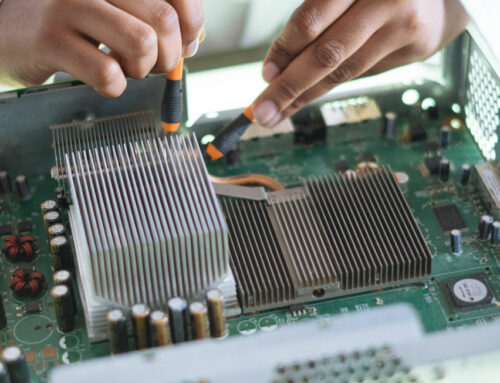Your company is rapidly growing, and you’re planning a significant network infrastructure expansion to support a burgeoning workforce, new location, need for increased connectivity, or all three. You may have already developed a solid, scalable plan based on a thorough assessment of your current network and expected future needs, or you may just be getting started on that process.
Wherever you are in your expansion planning, we want to help you avoid these common errors. If you’re an experienced professional who’s been through multiple expansions, these will probably not be a surprise to you. Consider them a friendly reminder about oversights that can be all too easy to repeat, even when you know better. If this is your first significant expansion project as a network manager, this will assist you in learning from those who’ve come before. While not a comprehensive checklist, avoiding these three mistakes can save you significant time, frustration and costs.
Mistake #1: Underestimating Hardware Needs
It’s one of the most common issues we hear from customers. Midway through the expansion project, they suddenly realize that they overlooked the extra cabling or rack needs for conference rooms, multiple printers, or other unique user requirements in some remote (but important) corner of the business. Now the project manager is scrambling to rush order more equipment on a tight timeline and budget. An even worse situation is when the additional connectivity needs aren’t identified until after the project is done, when user complaints start coming in. Now you’re faced with a lot of expensive and time-consuming rework, and no one – not you, not users, not leadership – is happy.
It might sound like self-serving advice, but you will save yourself a lot of trouble by spending some extra time on an honest assessment of your hardware needs. There is no one-size-fits-all formula for calculating this. It will vary according to your business and users, and it can be challenging to get it exactly right. If you’re concerned about the budget implications of new hardware, that is completely understandable. Summit will work with you to manage the costs of your hardware investments and help ensure that you have what you need within the budget available.
Mistake #2: Inadequately Investigating the New Space
You may literally be venturing into new territory with your infrastructure expansion. If you’re expanding into an unknown or under-construction floor or building, the building materials and potential interference sources may be different than what you’re accustomed to in your existing space. That could mean you’ll have new obstacles to plan around.
Make sure you have access to blueprints and floor plans that will alert you to possible obstructions. If the construction and layout design are still underway while you’re making your expansion plan, stay in close touch with those teams. That way you can receive updates on any changes to materials or layout that might have consequences for your work, too.
Mistake #3: Not Planning for the Next Expansion or Upgrade
‘
If you’ve ever been the new network manager where there was no overlap with your predecessor and they didn’t leave you an up-to-date network map, you already have a taste of this pain. Parsing out the logic of the previous manager’s configurations is time-consuming enough when you’re trying to accomplish basic day-to-day management and maintenance. Faced with an expansion, that prior lack of foresight can quickly become even more detrimental.
Even if the next expansion or upgrade feels like it’s in the remote future now, make sure you’re planning for its inevitable arrival. How? Document, document, document. Don’t just do it for the person who may be responsible for network management after you’re gone. The person managing the next upgrade or expansion could very well be you, regardless of what your intentions are now, so do your future self a favor.
Documentation may seem like the last priority if it feels like leadership is in a hurry and pushing you to complete the project yesterday. Of course, when you’re under pressure to complete the project within a certain timeframe and budget, every second counts. But a little extra time spent today on documenting the what, where, and how of your present network will very likely save you hours, days, or even weeks when what feels like a distant future upgrade suddenly becomes the next “has to be completed yesterday” project.
By planning realistically for hardware needs up front, conducting thorough research on your new space, and documenting your work, you’re setting yourself up for a smoother network expansion. For more tips to avoid growing pains during your project, read up on developing a scalable plan. You can also contact an experienced representative who will get to know your needs and help you ensure a smooth expansion.




